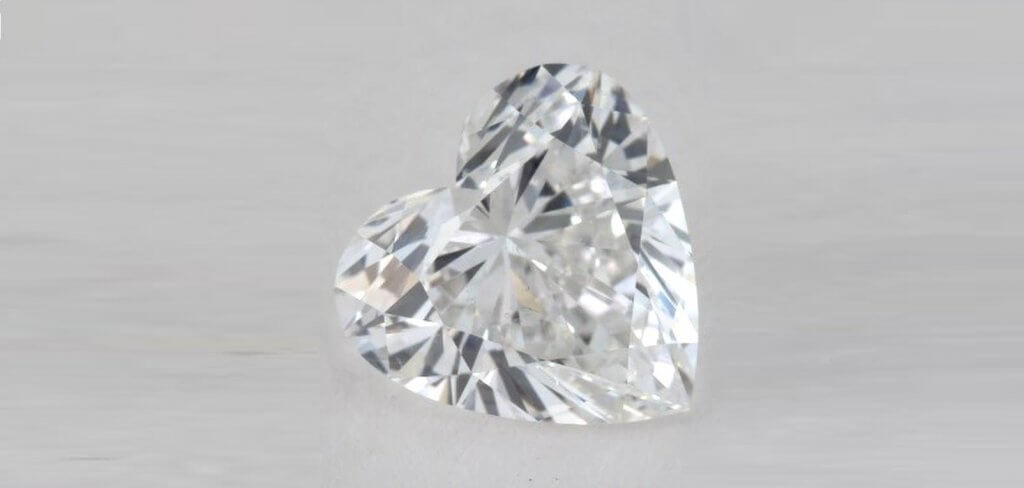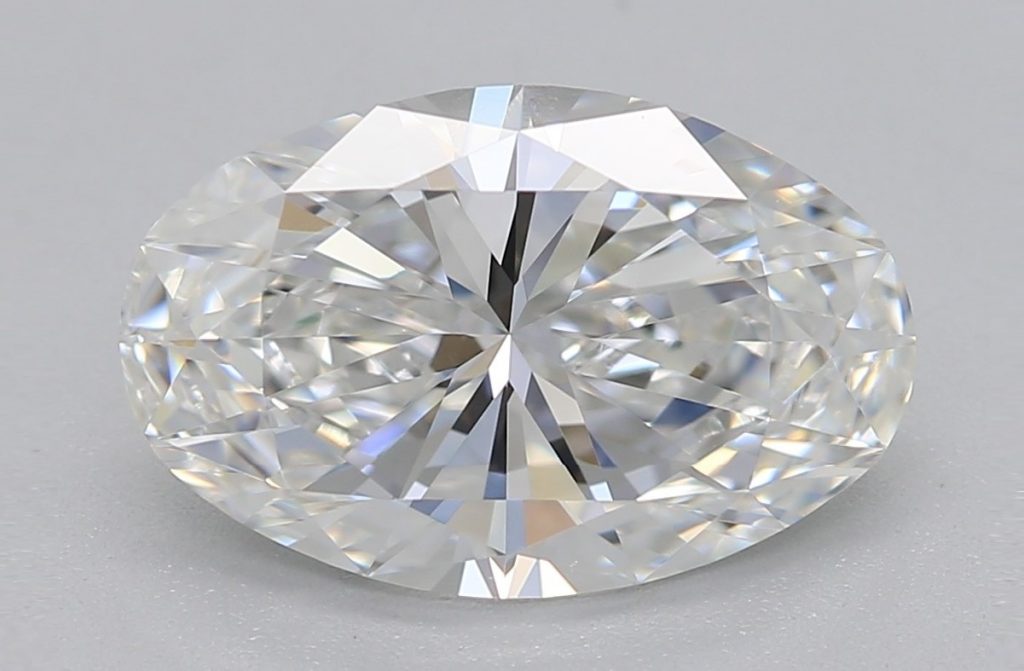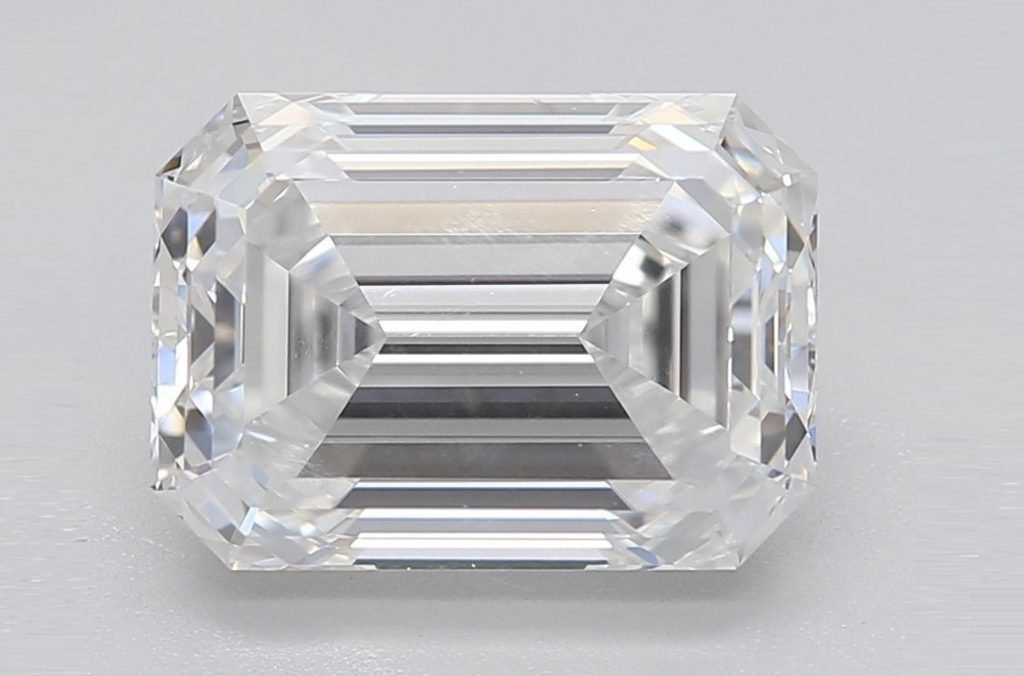The Unique Beauty of Polki Diamonds: A Guide
Key Takeaways
- Polki diamonds have held deep cultural significance in some parts of the world for many, many, many generations.
- Polki diamonds essentially represent diamonds in their rawest form (aside from the moment they’ve been mined from the earth, of course).
- With minimal polishing, they retain their ‘wild’ shapes and offer something totally unique to shoppers.
- Then again, without being cut and polished, these diamonds are unable to offer the same mesmeric light performance that the diamonds traditionally used in Western jewelry pieces are able to offer.
- While beautiful – and being explored by many contemporary jewelry designers – we wouldn’t generally recommend polki diamonds as a good alternative for an engagement ring, unless you’re totally sure it’s what your partner would want.

Most of the time, when we say the word ‘diamonds’, we’re not thinking of diamonds in their natural state. Instead, we’re thinking of diamonds as they are when they’re mounted in jewelry, worn on fingers, placed in jewelry store windows. In other words, we’re thinking of the perfectly cut, multi-faceted, highly brilliant versions of diamonds that are coveted all around the world.
It’s not hard to see why – and, after all, the diamond’s cut is the reason it sparkles the way it does. While even rough, fresh-from-the-ground diamonds are distinctive, they’re a far cry from the polished stones that make their way into engagement rings and fine jewelry.
Polki diamonds sit somewhere in between both extremes. While, within the United States, they have proven nowhere near as popular as cut and polished diamonds, Polki diamonds have a long and fascinating history behind them – and recent years have seen a rising interest in their unique beauty.
Polki Diamonds
What is a Polki Diamond?
Polki diamonds are natural diamonds that still resemble their original, rough shape. Most polki diamonds are polished just enough to feel smooth to the touch, although they retain their original shape.
Since Polki diamonds have not been given the precise facets or high polish of diamonds we are used to seeing in so many parts of the world, they are often referred to as ‘uncut’. Since they are often polished, however, some people refer to these stones as ‘unfinished’.
In spite of this, polki diamonds are finished. They hold tremendous significance in India – particularly for bridal jewelry. In fact, polki diamonds originated in ancient India, as a central and precious part of the Maharajas’ ceremonial jewels.
Thousands of years ago, only basic tools were available for shaping these diamonds. Basic filing tools – emery and oil – could be used to slightly modify the original shapes the stones, but nothing capable of altering their shape into anything resembling the cuts we are familiar with today.
Many Polki diamonds have a lustrous, glossy look to them. While they’re not as smooth to the touch as, say, sea glass, they share a slight resemblance. Their rising popularity likely stems from their organic, natural shapes. While every diamond ever found and cut is totally unique, the polki diamond exhibits that uniqueness more than any other type of diamond. It exhibits the original, earth-formed shape of the stone.
A part of their appeal is the fact that they force the jeweler to design and construct the jewelry around their unique shapes. Rather than working to accommodate a round, square, or rectangular stone, the jeweler has to work with a totally organic and unpredictable shape. The result is something incredibly natural and totally unique.
How many types of Polki are there?
Three: syndicate, Zimbabwe, and Khilwas.
Syndicate and Zimbabwe polki are considered to be the highest quality, though Khilwas is not far behind.
Are Polki diamonds real?
Yes, polki diamonds are real and natural diamonds.
Another influential style of Indian jewelry known as Kundan is created using glass stone (sometimes known as ‘glass polki’ but, in the US, typically referred to as crystal or rhinestone). Kundan is not made using real diamonds, but polki will always refer to real diamond.
Polki diamonds shine a lot brighter than Kundan, and are a lot more valuable (and, obviously, more durable, too).
Where do Polki diamonds come from?
While polki diamonds first came into existence in India, rough or ‘uncut’ diamonds are available from many diamond-producing countries around the world.
Their growing popularity – a result of the natural, rustic look they offer to brides searching for something more unique and unexpected than the traditional ring designs – means that a growing number of Western jewelers are embracing the tradition of crafting pieces around polki or ‘rough’ diamonds.
Do Polki diamonds sparkle?
Not like the diamonds you’re used to seeing. Polki diamonds have a bright, eye-capturing quality. When polished, they can appear almost luminescent, but they don’t produce fire and brilliance like cut diamonds do.
In polki diamonds, you can see an echo of the way light reflects off the facets of a cut diamond. Polki diamonds aren’t smooth like pebbles – they’ve got a lot of texture, and points that the light will pass between as the wearer moves under the light source. It’s beautiful, but subdued – very natural, and very understated.
But, if you came here looking for something that resembles what you’re (probably) used to seeing, then you’re in the wrong place. A diamond’s ability to produce that endless display of white brilliance and multicolored fire is dependent on its cut. Even the slightest error or oversight in the cutting process will reduce a diamond’s sparkle since each facet needs to be perfectly proportioned and arranged on the diamond’s surface.
For that reason alone, you can imagine why a diamond that hasn’t been given any facets won’t be able to compete with cut diamonds in terms of sparkle. Sure, sparkle isn’t everything – but, to people who have been dreaming of the beautifully brilliant diamonds in the jewelry store windows, it’s pretty much non-negotiable.
Does that mean polki diamonds can’t be used in engagement rings? Absolutely not. Plenty of people around the world have chosen polki diamonds for their bridal jewelry – not least of all because of their significance in India. We would, however, advise caution if your partner has never expressed any interest in these unique stones.
Cost
Is Polki more expensive than diamond?
Polki and diamond are the same thing but, compared with cut and polished diamonds, polki tends to be the less expensive option, since there are fewer steps involved in their creation and lesser quality stones tend to be selected.
Polki diamonds are precious in the same way cut diamonds are – they’re a rare, natural resources mined from a relatively small list of places in the world. They are all produced by nature over the course of more than a billion years, and only found as a result of significant mining practices, meaning they all hold significant value.
A lot of the time, the Polki diamonds are lower in quality (in terms of clarity and color) than the diamonds selected for cutting and polishing. Some people prefer the more rustic colors of Polki diamonds – and, for obvious reasons, inclusions pose less of a problem when you’re not able to look through a glassy facet to see them. This does mean that the diamonds used tend to hold lower value than diamonds selected to go the ‘traditional’ route.
One thing to keep in mind is that polki diamonds are harder to work with. As we mentioned, they help jewelers to create incredibly unique and bold designs, but they’re also a challenge. The jeweler needs to learn the specifics of each diamond they work with – the shape and texture – rather than being able to draw upon their existing understanding of cuts like the Round Brilliant or Emerald.
For this reason, polki diamond engagement rings (and any other jewelry) aren’t often significantly cheaper than traditional engagement rings and fine diamond jewelry. It takes an incredible amount of skill and expertise to create beautiful pieces, and the larger
What is the cost of Polki diamond?
Polki diamonds can vary in price from a few hundred dollars to thousands of dollars.
While polki diamonds are priced and treated differently to cut and polished diamonds, the price will still depend on the size and quality of the diamond you’re looking at. The exact same rules apply, in the sense that smaller polki diamonds with a less attractive color or a major inclusion will be significantly cheaper than much larger and more attractive polki diamonds.
What’s more, it totally depends on the jeweler. As we mentioned, working with polki diamonds is a tricky process, and each piece has to be totally unique in order to accommodate the diamond’s shape. A larger investment of skill and time will also raise the price.
Quality
At WillYou.Net, one of our top priorities is educating shoppers on the benchmarks of quality they should always pay attention to (and which ones they shouldn’t) when shopping for a diamond. Polki diamonds turns the entire subject on its head, however, and makes the process of finding a diamond totally different.
Do the Four Cs Matter for Polki Diamonds?
For the most part, no. The GIA does not grade rough diamonds, so shoppers won’t search by factors like clarity and color.
Instead, shoppers are expected to search on a much more subjective basis. Each Polki diamond looks a lot more distinct from the next than, say, two Round Brilliant diamonds. While those two Round Brilliants will be totally different when you start to look at the specifics (i.e., the Four Cs) they will have been cut according to the same design.
The shape of any polki diamond is almost totally unique. Sure, most of them are polished just enough that they feel smoother than diamond fresh out of the earth, but the polisher will use a very light touch, in order to preserve the organic shape.
As a result, the idea is for shoppers to see what shapes they gravitate towards. It’s more of an instinctual, individual process than the process of shopping for a cut and polished, GIA certified diamond.
As we mentioned above, lower quality stones are generally used for polki diamonds, since the point is not to create something that looks perfect. Shoppers aren’t often so wary of diamonds with a hint of color. The experience is more casual.
Care
How do you clean Polki diamonds?
Any jewelry containing polki diamonds can be soaked in a mild, soapy water and gently wiped with a cloth or soft-bristle toothbrush.
As you probably know by now, diamonds are incredibly resilient and durable. Regular wear can cause them to be dulled by oils and dirt, but this will be very easy to remove. Polki diamonds are just as resilient as the cut, polished diamonds sold in jewelers across the country.
Keep in mind that, since the surface of a polki diamond is lacking the smooth, glassy finish of a cut diamond, they can take on dust and oil more readily, and look dirty a little faster. This doesn’t need to be a big deal, since cleaning a diamond is a straightforward process, but it’s worth keeping in mind.
As with any jewelry, it’s best to avoid any makeup, body oils, perfume, or hand creams from building up – particularly in any tight or small crevices. Your jeweler will have the equipment to clean any build-up out, but try to be mindful about what you expose your jewelry to.
How do you store Polki jewelry?
As with any precious jewelry, you should invest in a good jewelry box and store each item separate from the rest.
In other words, none of the pieces should be touching. You can do this by placing each piece in its own compartment, or by individually wrapping your jewelry in muslin cloths.
Our Summary
It’s hard not to love polki diamonds, for the simple reason that they are just about as natural and as organic as it gets. When it comes to appreciate the raw, wild powers of nature – the long and complicated history behind every diamond mined from the earth – polki diamonds are the perfect illustration. Their significance for traditional Indian ceremonies is also a major part of that rich history, and a beautiful example of the power diamonds have held for thousands of years of human history.
If you’re used to seeing cut and polished diamond engagement rings, then there are some obvious drawbacks to going for a polki diamond instead of a cut diamond. Polki diamonds can’t offer any of the fire or brilliance we associate with diamonds, and they’re often noticeably lower quality than the diamonds selected for cutting and polishing.
They look great in jewelry, which often has an organic, free-hand feel to it, thanks to the irregular shapes these diamonds hold. They make a beautiful addition to any jewelry box but, for the most part, have not become a major rival to the traditional engagement ring in the United States.

Oct 3, 2021 By Willyou.net
Heart Shaped Diamonds: A Guide to its Brilliance and Symbolism

Apr 19, 2021 By Willyou.net
Oval Cut Diamonds: The Hottest Trend in Jewelry You Need to Know About








